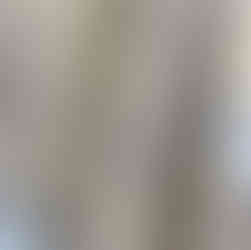What you wear is how you feel, and when you wear something that you have a relationship with beyond the fibre, it feels so much better. Sounds cheesy? Maybe. Let me introduce you to handwoven textiles and I promise you, you will never look back.

About silk worms.
Did you know there are over 500 types of different silk worm species?
The four main species being used to make fabrics are Muga, Tassar, Eri, and Mulberry.
Silk can either be reeled or spun, depending on the way the silk worm leaves the cocoon. Reeled silk is finer than spun silk. For spun yarn, this can be either millspun or handspun, and handspun yarn can be spun with a spindle or with a charka wheel.
The personal business of weaving.
The weavers I work with are always small family businesses, often in rural areas, coming from generations of artisan weavers. They get their silk yarns from the local market and use millspun yarns, or a combination of handspun for the weft, and millspun for the warp.
All handwoven products marked 'Indian Fair Trade' on the website come from special social programs that give deaf and different abled people an education and teaches them a trade. These are vulnerable groups in India, that are sadly often overlooked. Even though ALL our fabrics are fair Trade, these are the ones that are allowed to run the official label.
What are the different peace silks that we have one the site?
No1: Eri silk is made from the Eri silk moth, scientific name "Samia Ricini", which feeds off castor leaves as opposed to mulberry. The silk worms are allowed to leave to cocoon, which means the cocoons are open mouthed and cannot be reeled, but are spun like wool. The filament of the silk is more soft and 'wooly' than regular habotai silk and therefor has better warming qualities, which much fits the cooler climate of the area this silk is being produced.
The eri silk worm cocoons are typically from the northeastern states in India like Assam. Growing the worms is a very long process which takes around 45 days in total. The growth of the worm itself takes 30 days during which it is continuously eating the castor leaves from the trees in the villages.
The Eri silk eco-prints and dyes amazing, it takes on colour almost like wool. I do not scour the fabric before, I just use it unscoured.. If you'd like, you can give it a light wash with some ph neutral detergent.

We have handspun eri silk yarn on the website, and scarves with a mill spun warp and a handspun weft.
Below are samples of ecoprint on handwoven eri silk.
No2: Silk Noil (aka bourette silk) is one of my favorite garment fabrics. The silk worm use is Bombyx Mori, but spun from the 'leftovers'. It has a beautiful weight, texture and drape. Despite being 100% silk, it is machine washable and the high serecin levels make for a fantastic uptake in dye pigments. Our unbleached silk noil scarves are Indian Fair Trade label and WFTO certified. They come in two shaft and four shaft weave, the latter making a more interesting and dense texture.
Silk noil has a very typical smell, especially when it is wet. This is a silk that is woven a lot in the Bihar area of India.
No 3: Bulkul silk, also known as Katiya silk. Bulkul silk yarn is a raw silk spun out of Tassar cocoon peduncles, dark in color and compact. They are made into floss-like matter after softening, then spun.
The Tassar silk moths themselves are from the Antheraea family. These silkworms live in the forests around the villagesin trees where they feed of tannin rich leaves from trees like myrobalan and oak. This is what gives Tassar its' rich texture and natural, deep-gold colour. A fabric with bulbul warp and weft is very dark which is why often the warp is made from Matka silk and only the weft from bulkul.
No 4: Matka silk. Perhaps the better known peace silk types. Produced in the region of West Bengal. The yardage is great for clothing, Matka Silk is a rough handloom silk fabric made from the waste Mulberry Silk (Bombyx Mori) without removing its gum (sericin) part. Matka is spun and woven in the southeast of India.
Matka is available in many different yarn widths, the finer the yarn the more expensive the fabric. Even though I personally like my yarns super chunky, for dyeing and printing purposes the finer Matka silk is more appropriate.
We try to have both Matka scarves and Matka yardage available on the site but availability can be tricky.
Let me know in the comments what your favourite handwoven silk is!
























